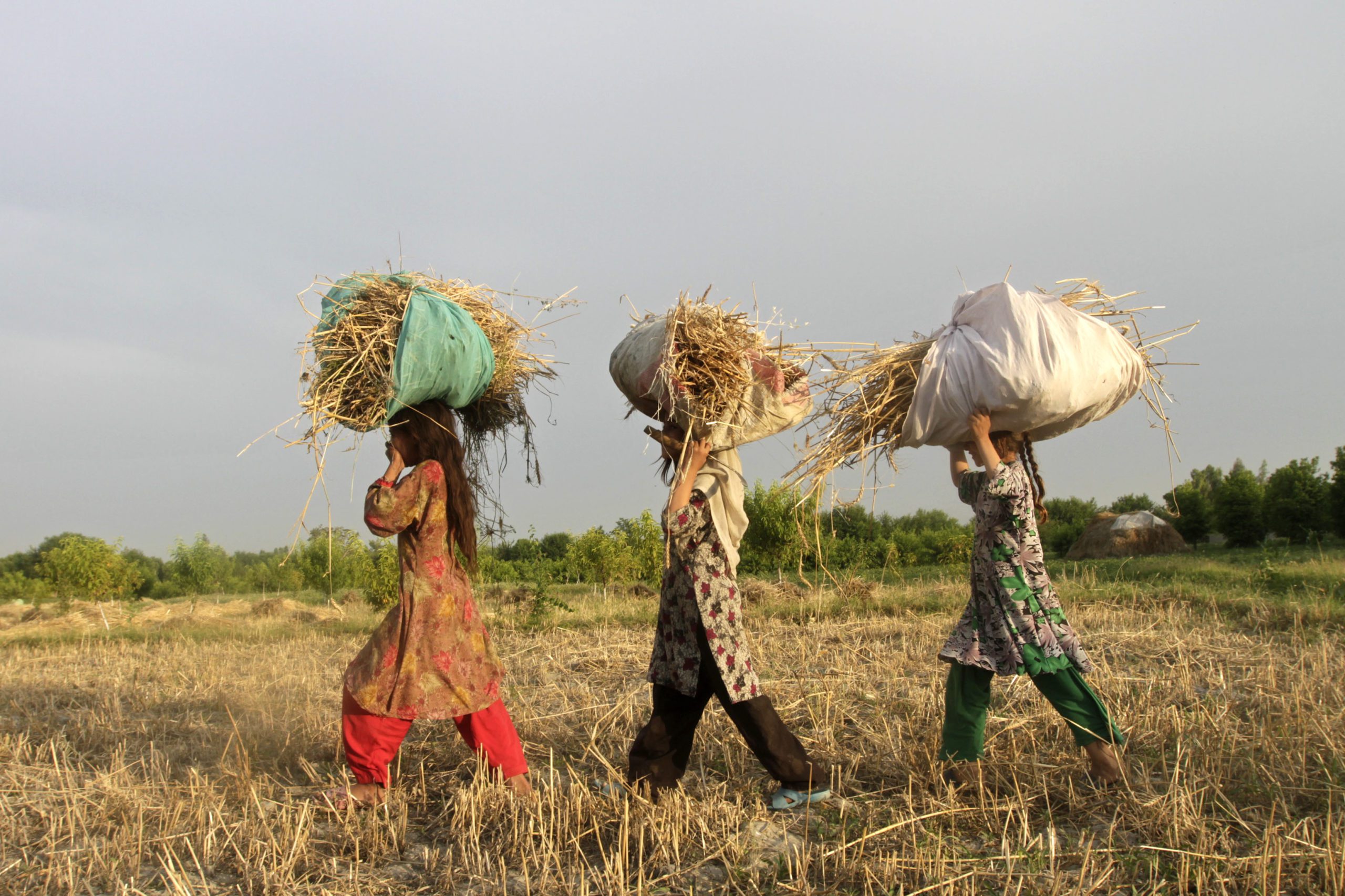
In March 2021, I visited an agriculture and veterinary institute (AVI) in northern Balkh province in Afghanistan. With state-of-the-art educational infrastructure and labs, the institute is built on about 250 acres of land in the outskirts of Mazar e Sharif. The AVI is separated from the surrounding villages by the walls of an old castle. Beyond the walls, you see women and girls working in the agricultural fields. However, inside the walls—contrary to expectations—very few girls are pursuing formal agriculture education within the institute. The question is, why? Why have we been unable to fill these empty classrooms with students from outside the walls of the institute?
In the informal sector, women and girls from all socioeconomic and religious backgrounds actively participate in agricultural activities. Indeed, a 2017 study found that 70 percent of rural women are directly or indirectly involved in agriculture. They learn and transfer agricultural skills through informal processes with family and friends.
According to a 2018 report by the World Bank, 40 percent of the total labor force is employed in agriculture, and in rural areas more than half of the workforce is busy in the sector. Agriculture is considered the backbone of the Afghan economy, and women the backbone of agriculture, through unpaid labor. The Afghanistan Growth Agenda identified agriculture as one of the top growth sectors in the country, and the National Comprehensive Agriculture Development Priority Program prioritized an aggressive policy goal strengthening women’s role in growing and increasing food production at the household and commercial levels to ensure food security.
While national policies are calling for equal access to education, the question remains why girls’ participation in formal agriculture education remains low, particularly in rural communities.
The National Strategy on Women in Agriculture recognized formal agriculture education and women’s skill development as essential to inclusive agricultural development and called for the enhancement of vocational and skills training for women and girls. While national policies are calling for equal access to education, the question remains why girls’ participation in formal agriculture education remains low, particularly in rural communities. There are several key challenges that require further research.
Challenges
1. Low participation of girls in agricultural education
The Technical Vocational Education and Training (TVET) Authority of Afghanistan manages about 380 technical and vocational high schools and institutes across the country, of which about half are dedicated to agricultural education—or at least teaching agriculture as a trade. However, in 2020, of the 20,000 students studying agriculture in TVET programs, only around 3,000 are girls, and most of them are studying in urban areas. Of the 34 provinces nationwide, nine have less than 50 girls enrolled in agriculture schools and institutes; in another nine, there are no girls enrolled in formal agriculture education at all.
2. Perceptions of agricultural education
Agricultural education is perceived by society as second-class education. As one female teacher at an agriculture institute commented, “When I heard that through Kankor [the national higher education entrance] exam I got [accepted] to the agriculture faculty, I cried for one week. I wanted to become a doctor.” In my survey as a part of the Echidna Global Scholars program, of the 82 female students already studying at the agriculture faculty at Balkh University, only 12 respondents selected agriculture as their top choice. Further, of the 55 female students already studying at the AVI in Balkh, only 21 selected agriculture faculty as their top choice in Kankor. Since they could not get to the four-year undergraduate program, they are now pursuing a two-year degree program at the AVI. My survey indicates that female students are more inclined toward law and political sciences and medical sciences instead of agriculture. In some instances, even agriculture faculty professors questioned female students on why they were not studying something else instead of agriculture.
3. Lack of female teachers
Female teachers account for 4 percent of the total teachers in agriculture. Of the 1,248 teachers in agricultural schools and institutes in the country, only 54 are female, half of them hired on short-term contracts. The lower number of female students in agricultural education results in a lack of female teachers to serve as role models, resulting in a vicious cycle in which the small number of female teachers leads to a lack of interest among female graduates in teaching agriculture as a career, which attracts fewer female students, and so on.
4. Lack of financial resources
The TVET Authority would require substantial additional funding to increase and expand TVET and agricultural education for girls, yet it is unclear where this funding would come from. The current TVET Strategy (2019-2024) outlines the establishment of eight special TVET schools for girls, but no reference is made as to how or where these schools would be built, and the strategy does not mention how such construction would be financed nor where the funds would come from for their operation.
Related Content
As an Echidna Global Scholar, I will investigate pathways that could potentially address some of these daunting challenges, reviewing policies that currently support or hinder girls’ participation in formal agriculture education. I hope that my work at the Center for Universal Education will contribute to girls’ greater participation in TVET—particularly in formal agriculture education in Afghanistan—so that technical and vocational skills can help unleash their potential and enable them to more effectively participate in the national growth and economic development of the country.

